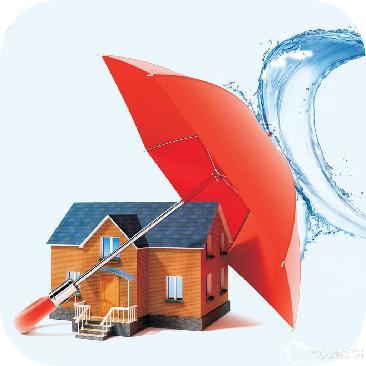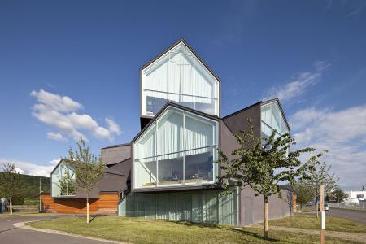Development trend and application of new building materials in my country
Date:
2020-05-21 07:41:01
With the rapid development of my country's economy, people's awareness of construction is getting higher and higher, and the requirements for safety, economy and comfort of the construction industry are also getting higher and higher.

With the rapid development of my country's economy, people's awareness of construction is getting higher and higher, and the requirements for safety, economy and comfort of the construction industry are also getting higher and higher. With the emergence of green buildings, new building materials have also emerged. New building materials include wall materials, insulation materials, waterproof materials, and decorative materials.
Analysis of the status quo of new building materials
From the current engineering cost of modern buildings in my country, it can be seen that the cost of building materials accounts for about 50% of the total construction cost, and the quality and quality of building materials directly affect the quality of the building. In recent years, with the change of architectural styles and the improvement of building functions, building materials have also completed a new transformation, which can be summarized in four categories: new wall materials, new waterproof and sealing materials, and new thermal insulation materials. And construction and decoration materials.
Compared with traditional building materials, new building materials have greatly improved in terms of materials and functions. From the functional division, it can be divided into: decorative materials, thermal insulation materials, curtain wall materials, sealing materials and waterproof materials, etc.; from the material division: can be divided into cement materials, glass materials, wood, steel, plastics and other various Auxiliary hardware, non-metallic materials, etc. There are many new types of materials currently used, such as: bricks in wall materials, mineral wool boards and glass wool in thermal insulation materials, coils and coatings in waterproof materials, coils and coatings in waterproof materials, and polymers Composite materials, decorative materials and new RPC concrete, etc.
Nowadays, thermal insulation materials have been combined with energy-saving and emission-reduction measures, and are constantly improving, gradually moving towards green buildings. Waterproof materials have broken away from the traditional concept of pure waterproofing, and have gradually formed a waterproof system with product specifications and grades; In terms of decoration materials, it has been refined into multiple wholes, including: curtain wall materials, wallpaper, floor, ceiling and other materials with different attributes, which fully reflects the diversity of materials.
The impact of new building materials
Compared with traditional building materials, the application of new building materials makes them stronger, lighter, energy-saving, more powerful, and more in line with my country’s “basic national policy.” In terms of related performance research, new building materials have improved mechanical properties, durability and The corrosion resistance has been greatly improved. In the production process, the production raw materials are fully utilized, and new processes and technologies are adopted to improve the usability of the materials.
Application of new building materials
As the load-bearing structure of the building, the quality of the wall directly affects the stability and safety of the building. Currently, the most widely used wall materials in my country's construction include clay hollow bricks, clay bricks, non-clay bricks, aerated concrete blocks, and lightweight panels. Currently, the walls of buildings under construction are mostly reinforced concrete materials, plastic materials and lightweight wall materials. Such materials can improve the thermal insulation, sound insulation and safety performance of buildings in practical applications. Compared with traditional wall building materials, new building materials have the characteristics of light texture, low thermal conductivity, good thermal insulation performance, good waterproofness, obvious sound insulation effect, and strong ease of processing. They can reduce the weight of building materials while also reducing materials. Usage and energy consumption.
Application of insulation materials
In recent years, major universities in my country have conducted more in-depth research on thermal insulation materials, and have successively developed polystyrene foam insulation boards, rock wool boards, glass wool, perlite insulation boards, polyurethane foam boards, and perlite insulation boards. Insulation materials of different materials such as silicate load slurry.
At present, the development of thermal insulation materials in the world is relatively Xunshu, mineral wool and glass, mineral wool and glass wool materials occupy 50% of the market application rate, foam insulation boards occupy 40% of the market application rate, calcium silicate and expanded pearls Thermal insulation materials such as rock account for 5% of the application rate. At present, new types of insulation materials include steel mesh rock wool sandwich load board (GY board), calcium silicate insulation board, gypsum composite board and GRC sandwich composite insulation board. Compared with similar thermal insulation materials, the new thermal insulation board has the characteristics of good thermal insulation effect, low material cost, and simple construction technology, but it also has the defects of low strength, poor construction performance and insufficient connection with the building base.
Application of waterproof material
With the development of science and technology, my country has developed rapidly in terms of waterproof materials and has a wider range of applications, including bridges, tunnels, water conservancy and hydropower, national defense, and transportation industries. The materials used in different industries are different. The current waterproof materials include waterproof membranes, sealing materials and leak-stopping materials.
Application of concrete materials
Concrete is one of the most used materials in modern building materials, and its quality directly determines the quality of the building. RPC is a new type of cement base material with ultra-high strength, ultra-high toughness and ultra-high stability. Due to the superior performance of RPC reactive powder concrete, its compressive strength is 2 to 4 times that of ordinary cement, and its flexural strength is 4 to 6 times that of ordinary cement. It will be the main application material in future construction. At present, many universities in my country have begun in-depth research on RPC reactive powder concrete, and many schools have prepared concrete with a compressive strength of more than 200MPa. 25mm thick and same strength RPC reactive powder concrete is equivalent to 60mm thick C40 concrete. The application of related admixtures in RPC improves the internal structure of the concrete, increases its strength and durability, and has higher strength and related mechanical properties. The required parts have strong practical value.
Keyword:
Recommend




